Tennis
ATP: The End of the Professional Career: Tommy says goodbye to Tommy.
Tommy Haaas has officially ended his professional career after more than two decades:”Now a new phase of my life is about to begin,”says the almost 40-year-old.
He was so much in his long, long tennis life. He was the early promise of a great future. He was already the silver medal winner at the age of 22 and number 2 in the world at the age of 24. He was then the biggest unlucky person in the travelling circus, the permanently injured. But also the ever-repeating comebacker, the indefatigable, the never giving up, the always ambitious. After all, he was the late, nostalgically wrapped victorious type, and on his rather old days he was once again a champion in high-class tournaments.
And now it’s really over. Now Thomas Mario Haas is retired, the man everyone called Tommy. This sometimes adventurous, sometimes crazy, sometimes great and sometimes tragic career took almost 22 years. Haas, 39-year-old Sisyphus of tennis, is no longer a professional tennis player. Haas, who is 39 years old, is no longer a professional tennis player. Now a new chapter is about to begin for me,”says Haas.
He had already secured his worthy farewell last year on a tour of the most important stages of his career. Haas came back to the most important German tournaments, it was no longer about winning and winning, but about the fact that he wanted to beat his fate once again.
He was injured and beaten again, it tweaked at all corners and ends, but Haas wanted to get back out on the stages he had loved, whether in Munich, Halle or Hamburg. Or Stuttgart. And there, at the Weissenhof tournament, he also created something extraordinary and conciliatory. He won against Roger Federer, his friend and frequent spoilsport. Because Haas didn’t win a game at other appearances after that, the fact remains: He celebrated his last victory against Federer, the biggest and most important opponent imaginable, against Federer.
Haas was already in a hermaphroditic role in the touring business last year. In addition to his many roles, he was also a tournament director in 2017. About 18 months ago, Larry Ellison, the software billionaire who once founded Oracle, had transferred Haas to Indian Wells as head of the fifth-largest tournament in the world. Haas was not allowed to compete in 2017 because of the obvious conflict of interest there, in the desert of California – but otherwise he was always in two functions in the professional business.
As a one-man operation Tommy Haas, on the very last meters of his own career. And as an ambassador for the highly esteemed tournament, which recently proved to be the most innovative station in the annual calendar,”I haven’t been a professional for a while now with both legs,”says Haas.
By the way, this could also be seen in Wimbledon, the most important local event of the tennis year. Haas played there last year and lost respectably to Belgian Ruben Bemelmans in the opening round. But he was there again for the final, at the invitation of his old friend Federer. Right in the middle of it, but not quite there any more. He was very happy, Federer said at the time,”that Tommy came. We’ve been travelling together for so many years.”
Which was true. And again, no. After all, Federer had finally become the darling of the tennis gods, one who played his talents completely and without injury on the Centre Courts of the world. While Haas, hardly less gifted and talented, was severely shaken by fate. He is perhaps the best player of the pro era in tennis who has never won a Grand Slam,”says American Andre Agassi, one of the industry’s superstars.
Haas has been living with enormous expectations since early youth, he was always regarded as a huge talent. A group of investors even bet money on a bright future when Haas and his sister Sabine moved to the training factory of Nick Bollettierei in Florida at the beginning of the 90’s.”ToSa” was the name of the construction, formed by the first names of the two tennis children. Only Tommy held on, his sister Sabine soon returned to Germany and the harsh, rough tone of Bollettieri’s behaviour overpowered her psychologically. Haas changed already in 1996 to the professional tour, his first big tennis moment came 1997 at the Hamburg Rothenbaum, when he reached the semi-finals in his hometown at the then still great Masters.
He continued to improve, in 2000 he won the silver medal at the Olympic Games in Sydney, then he quickly roared to second place in the tennis racks’ hit parade. For the final breakthrough, all that was missing was a Grand Slam triumph, the victory in one of the four tournaments that define a player in tennis and also determine his market value.
But Haas then followed this one big victory all these years in vain. Not only because it sometimes did not grow with the size of the task in the decisive moments. Or because he suddenly found himself in an era in which absolute supermen such as Federer, Rafael Nadal or Novak Djokovic determined the course of things. But above all because he couldn’t rely on one thing every athlete has to rely on existentially: On his own body “I too often had an opponent whom I couldn’t handle with my forehand or backhand. This opponent was my body, were the permanent injuries,”says Haas.
There were years when he didn’t play. There were years when he was more often in medical practices and hospitals than at the Centre Court. And there were years when he was close to throwing everything away and not making a comeback again. But there was always a reason why Haas kept going – and that was simply true and without pathos: He loved his sport, he loved appearances in front of a large audience on big stages, he was what they call a ramp-sau in the scene. Rampensau, persuader too.
“For a long time I could not imagine a life without tennis. It was just my life,”says Haas. Last year, when he had managed to return again in a passionate effort, the old friend Federer said:”It is admirable how he has survived all this. And how much he sacrificed for tennis.”
His life between the mid-twenties and mid-30s was relatively easy to describe. Haas had injury problems. He had surgery. He came back. He hurt himself again. He had another operation. And came back. This happened a dozen times, often Haas was already written off, often he secretly copied himself.
And then there was the headline again:”Comeback for Tommy Haas” 2012 and 2013, he was already deep in his thirties and achieved three completely unexpected, somewhat conciliatory tournament victories in Halle, Munich and Vienna. It was a moment in which Haas had already made his peace with tennis, in the role of the brave, everywhere applauded stand-up man.
He has played 907 games altogether as a professional player, in three different decades. 569 times he won, 338 times he lost. 15 titles are in his career biography, which also contains many remarkable chapters as an international player. For many years he rubbed himself in the Davis Cup and had great black-red-golden tennis moments.
But the tragedy of the generation after Boris Becker and Michael Stich was that the two best of the heirs didn’t work as a team – Haas and Nicolas Kiefer. Now Haas only wants to do what he wants. And also, what he was not allowed to do for many years, skiing for example. The most important thing, however, is that he now has even more time for the family, his wife and his two daughters. For a long time everything was nothing without tennis. Tennis is no longer everything, even if it is not entirely without tennis.


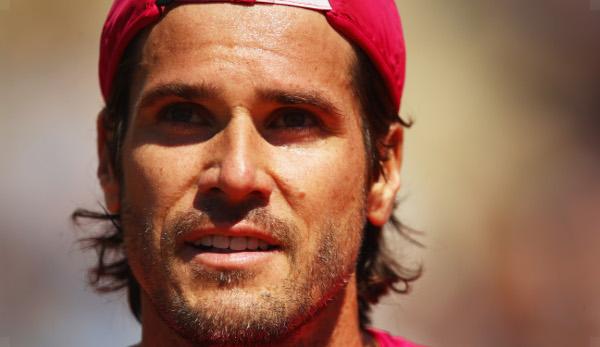



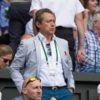

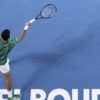

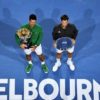

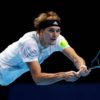
You must be logged in to post a comment Login